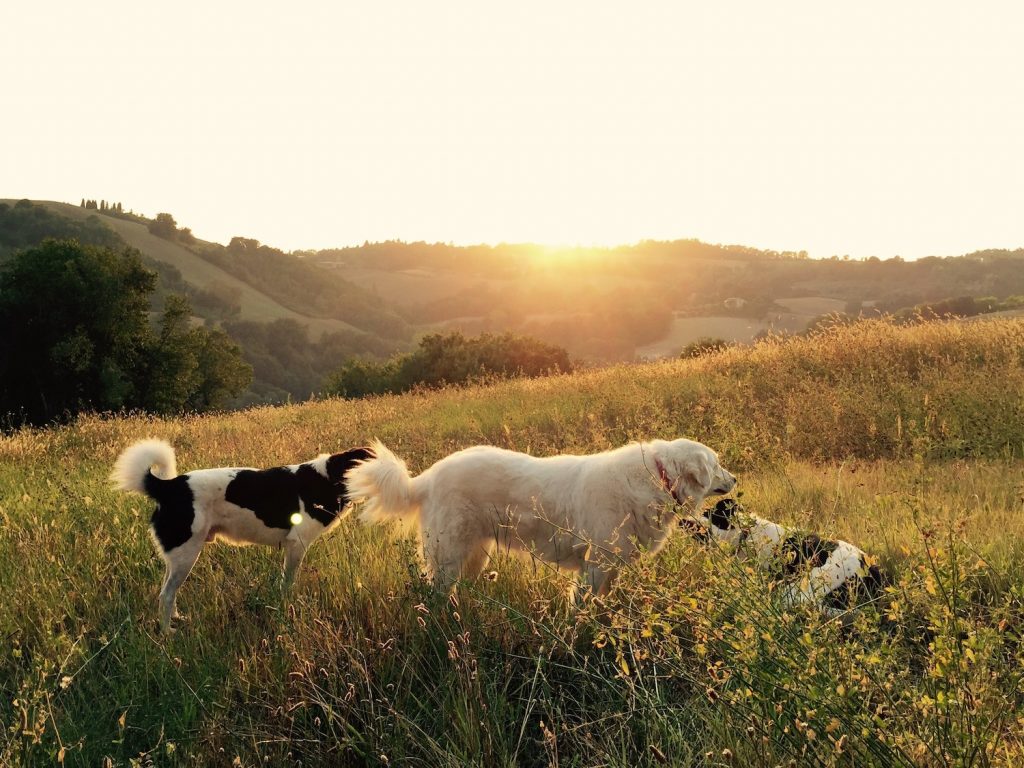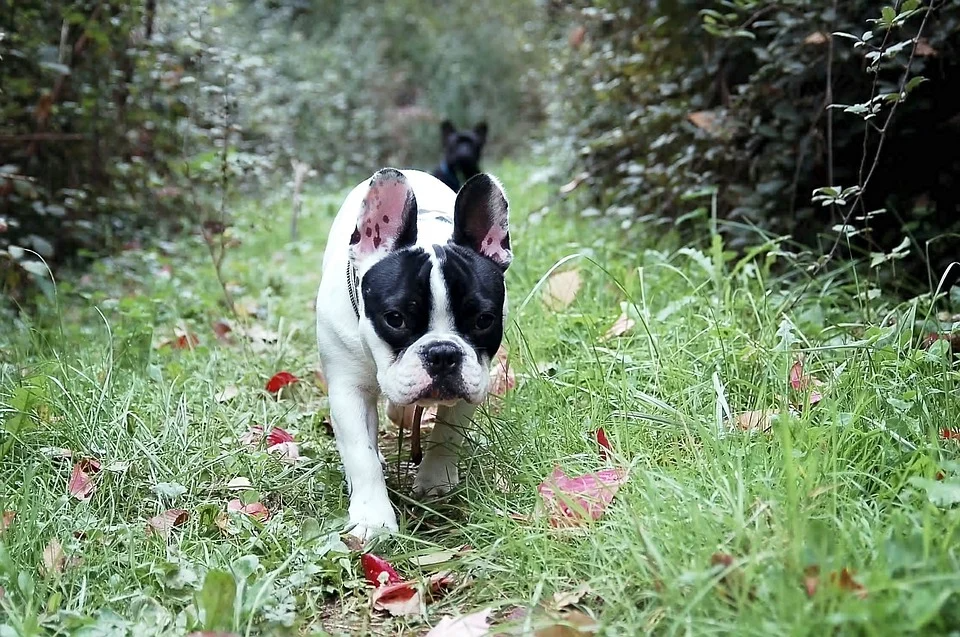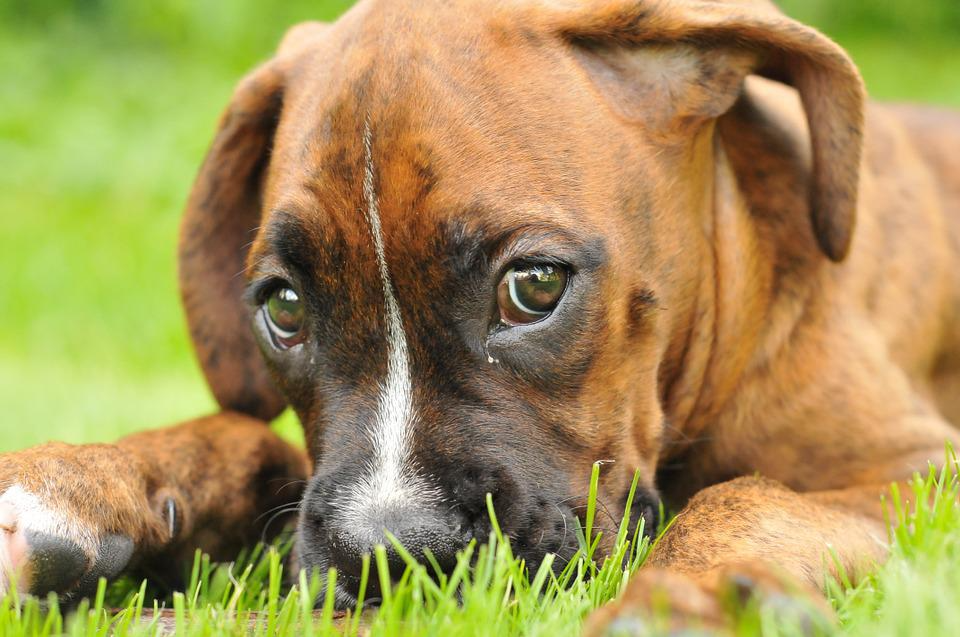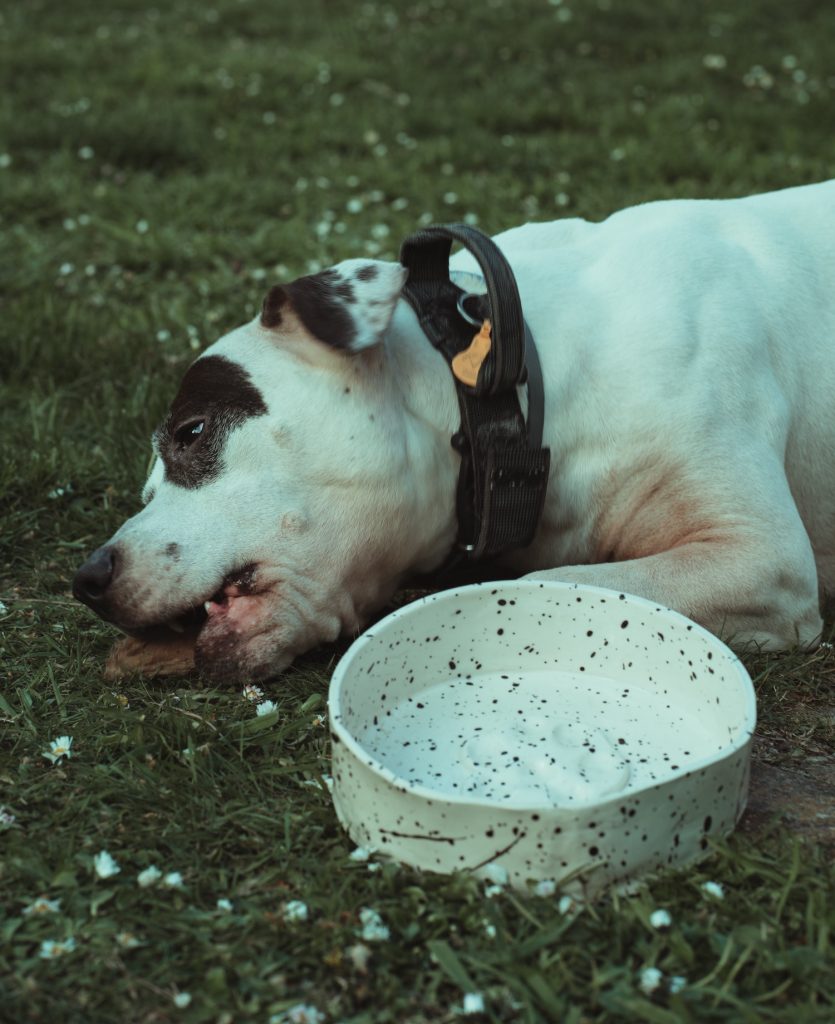No dog owner could possibly dislike playing with their pet, right? The dogs are continually making us laugh and lifting our spirits.
There are always advantages and disadvantages to anything, from an event to an animal. Dogs can sometimes exhibit extremely unattractive behaviors. Consuming dead animals, for instance.
Is there a biological reason for this? Let’s investigate why dogs resort to scavenge and what might be done to stop it.
Why do dogs eat dead animals?
Dogs eat dead animals by instinct
The instincts of wild wolf ancestors are still passed on in the genes of domestic dogs today. Therefore, dogs not only carry a hunting instinct, but also seek other food in the environment.
This instinct will not only prompt your dog to steal the food from your plate, but it will also make him rummage through the trash or go for a walk on a dead animal carcass.

Dead animal carcasses and the stench, if they’ve been dead for a long time, are a delicious snack for dogs.
In fact, dogs are inherently scavengers. The carcasses of long-dead, rotting animals are always a favorite snack of dogs.
Dogs are trying to hide their own scent
Eating dead animals certainly isn’t the only bad thing your adorable pup can do.
Owners may also have witnessed their dog rolling around in the feces of other animals or dead animals.
This is an instinct that dogs have inherited from their wild ancestors to be able to survive in harsh environments.
It is believed that the dogs roll over stinky things like feces and corpses and sometimes eat the stinky stuff to mask their scent.
This will help the dog hide from predators and prey. Make it easy for dogs to run away or hunt the animals they want.
Dogs are naturally curious
Dogs are very curious about the world around them. Like humans, dogs have 5 senses to perceive and understand the physical world around them.
However, some canine senses are more developed than humans, and dogs also have others that are less developed than ours.
Dogs’ sense of smell is much more developed than ours.
They rely on their noses to discover what’s going on around them.

Unlike humans, most dogs do not have a good sense of smell and taste.
Therefore, the dog will try to smell the carcass a few times out of curiosity and eventually will gnaw the dead animal to learn more about the taste.
Animal carrion is more common in smaller dogs and especially puppies, chewing and gnawing on objects is a learning experience.
They are unfamiliar with the vast world around them and are exploring their environment with more than just their eyes, ears, and nose.
Dogs were bred to eat dead animals
Many dog breeds are bred for specific jobs. For example, the Belgian Shepherd Dog was originally bred to graze livestock.
Other dogs have been bred to follow humans in hunting and eating the prey their owners hunted.
For example, Golden Retrievers, English Springer Spaniels and Hungarian Pointers are all favorite breeds of bird hunters, as they quite enjoy enjoying the reward of dead birds that their owners hunt.
Sometimes, even though dogs have not been trained to eat animal carcasses, they are still driven by their ancestral instincts to find carcasses for their owners.
This is why you might spot a half-eaten rat or bird carcass on your porch, with your beloved dog by your side and looking at you with pride.
Pica syndrome causes dogs to eat carrion / dogs eat dead animals
Pica is a disease that causes dogs to have a habit of eating unhealthy things like soil, sand, paper, plastic, rocks, animal carcasses, etc and coprophagia (eating feces) is a form of this condition.
It can be caused by nutritional deficiencies, electrolyte imbalances or starvation; if your dog begins to eat inedibles or begins to eat a lot of poop (either his own or another dog’s), scavenges, and eats dead animals it is important that you check with your veterinarian that there are no underlying health conditions – and check their feces for parasites and worms.
Finally, there is the issue of hunger causing dogs to eat carrion / dogs to eat dead animals
A dog that isn’t getting enough to eat is more likely to follow their instincts and hunt for something to eat, and if the animal is undernourished and can’t find the right food, they can eat junk. and anything that can fill them up including carrion/animal carcasses.
The risks that dogs can face when eating dead animals / scavengers
In most cases, dogs will not pose much of a risk from eating or smelling dead animals other than being thoroughly washed and kept away by their owners for a few days. However, there are two things owners need to do. Attention: dead animal carcasses have the risk of poisoning dogs or toxic bacteria, the risk of intestinal parasites such as worms and flukes.
Dogs can eat poisoned dead animals
If the animal dies from poisoning, then when the dog eats it, the dog will also likely be poisoned.
Rat carcasses are the most dangerous due to the high probability of dying from rat bait.
Dogs can eat dead animals that carry disease-causing bacteria
One of the most dangerous bacteria is clostridium botulinum, a neurotoxin that is found in dead animal carcasses as well as in undercooked or spoiled food.
It is very rare for dogs to contract this bacteria from eating scavengers, but the consequences can be severe if ingested.
When this neurotoxin-carrying bacteria enters the dog’s body, it will make the dog’s whole body weak, weak, and shaky.
Symptoms begin in the hind legs and then progress up the trunk, front legs, and neck. It eventually leads to paralysis of all four limbs.
In severe cases, paralysis can affect a dog’s ability to breathe, leading to death.

Especially dangerous is the enterotoxin caused by Streptococcus spp., Salmonella spp. And Bacillus spp. binds and damages epithelial cells lining the stomach and intestines.
The first, and sometimes the only, sign is vomiting that occurs shortly after ingesting a corpse. This can be followed by severe diarrhea.
Stomach and intestines are stagnant with gas accumulation and sometimes abdominal pain occurs after diarrhea.
Intoxication caused by these substances can be quite severe, causing vomiting, diarrhea and systemic shock and death.
Dogs can eat animal carcasses that are at risk of infecting intestinal parasites such as worms, tapeworms, etc.
A special case is represented by several species of parasites that can also be present in the viscera of domestic animals (i.e. Fasciola hepatica, Dicrocoelium sp., Protostrongylids, Dictyocaulus sp. and Eimeria stiedae) but have developed other evolutionary strategies besides eating meat to spread.
These parasites primarily affect the lungs or liver during their adult stages, and the dispersal stages (i.e. egg, larva, and oocyte) can reach the environment through host feces and continues to develop into a life cycle that directly or indirectly involves one or more host intermediates.
All eggs and worms are parasitic, they will infect the inside and effects on your dog can range from mild irritation, to severe nutrient deficiencies, or even death.
How to train dogs not to eat carrion / how dogs do not eat dead animals
The best way to prevent dogs from eating dead animals is to train them to master the “no” or “no” command.
You can teach this command at home with treats (dog treats). Use a food that you know your baby loves and practice not to touch when you say “no” or “no”.
The detailed training method is as follows:
Place the treat on the floor and when the dog comes near to sniff or eat, cover the treat with your paws.
Your dog will probably still sniff and even try to eat, but be strong and wait for it to give up.
When the dog loses interest and walks away, say “good job” and reward him with another delicious treat.
Repeat this process until your dog understands that when you cover the treat with your paw, it thinks they should give up so they can be rewarded with another delicious treat later.
Next, start saying “no” when covering the treat with your paw and continue to reward your dog when he gives up.

Once the dog has mastered this command, you can drop the treat on the floor and say “no” to train the dog to understand that they are not allowed to have access to the treat.
Once your dog has mastered verbal commands, start walking them and prepare snacks to reward them when they follow your “no” commands and walk away when they encounter a carcass. .
What’s important here, however, is choosing your reward – regularly offering delicious treats or overly filling snacks can negatively affect your dog’s health.
Choose something light like a cookie or small snack, or a vegetable your dog loves.
Avoid anything that is too sugary (including natural sugar) or contains harmful additives.
By teaching your dog the master “no” command, hopefully, you won’t have to face your baby and some scavenger with an eager face.
Also, one of the best ways to teach dogs that they shouldn’t take random things on the street is to use the command “put it out”.
Anyway, this is something every dog should be taught – you never know when a dog might be tempted by something dangerous.
Once your dog is sure of this command, you’ll be able to say it every time your dog moves to an item they shouldn’t eat.
We also highly recommend teaching the “release” command. This way, if you’re too late to “put it out,” you can still get whatever your dog has gnawed out of his mouth before they actually swallow it.
Keep a close eye on your dog when he’s outdoors/walking so he doesn’t have a chance to get close to carrion/dead animal carcasses.
Always walk with a dog collar and leash. So that when your baby finds a rotten body, you can still control the rope and do not let the baby come near.
Vocal training “no” also helps you control the situation when your baby encounters a dead animal.
In short, the best way is to keep your baby out of reach of these delicious but disgusting fast foods and look for this hidden risk of illness.
There will always be times when your dog quickly rushes to something they want to pick up without any warning signs.
However, observing their body language will give you clues as to what they are about to do.
Watch your dog’s behavior closely before they prepare to eat meat to find out what these signs are.
It could be that their tail is suddenly wagging with excitement, or their nose is too active.
Maybe they started spinning around looking for anything they could smell.
Either way, as soon as you notice a scavenger hunt signal, redirect your dog.
Use a muzzle for your dog
It’s a great quick fix for scavengers and carrion eaters, but keep in mind that you need to muzzle the first time you train your dog before actually using the muzzle. when going out.
Ideally, you should only use the muzzle for short periods of time, when you can observe your dog.
Give your dog a chance to pick up trash at home
As we mentioned, scavenging and eating dead animals is instinctive for dogs.
So if you want them to stop eating corpses while walking, you’ll need to provide them with a safer alternative.
There are several ways and you can do this.

Set up a simple treasure hunt-style game in your garden by hiding things around and allowing your dog to search for these.
Sniffing mats and toys also work well, especially if you use them before walking your dog.
Choose your route when walking your dog
Chances are some of your walking routes have more litter than others.
Until you’ve trained your dog to stop eating corpses, avoid these routes as much as possible.
Instead, try to choose walking routes that are generally fairly clear. This way you will eliminate a lot of temptations.
Once you have control over how your dog behaves while walking, you’ll be able to walk your friend anywhere.
Summary
- Why do scavengers/dogs eat dead animals: instinct, scent masking, curiosity, breed bred to hunt and eat hunting rewards, possibly Pica syndrome, a few are due to hunger.
- The risks dogs can face when eating scavengers: poisoning, infection with dangerous bacteria – clostridium botulinum – bacteria that carry neurotoxins. There are also enterotoxins caused by Streptococcus spp., Salmonella spp. And Bacillus spp.
- It is also important to pay attention to intestinal parasites such as worms and flukes.
- Ways to prevent dogs from eating carrion/dog eating dead animals: train your baby with voice commands, keep them out of reach of scavengers when outdoors/walking, observe the dog’s behavior when outdoors, use muzzle for dogs with the owner’s monitoring, pay attention to choose a safe walking route.
- Whether you have a small dog or an older rescue dog, eating corpses is a behavior that you definitely discourage. Luckily, as long as you’re consistent, it shouldn’t take too long to train your dog to stop eating anything and everything when outside.
- And don’t forget to contact your veterinarian as needed for advice on a healthy diet that will help your dog not only get the vitamins, minerals and nutrients it needs – but also help them not feel hungry and reduce the desire to find their own food like carrion/carcass of animals.